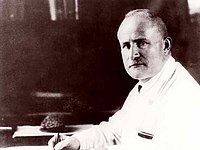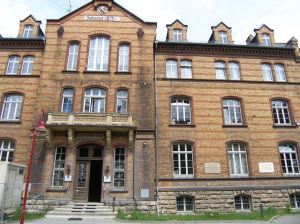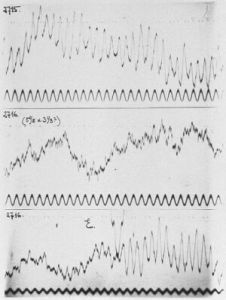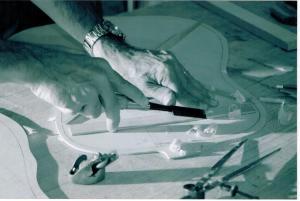Ravintelivalistus, Varjobaari, Hervanta, 12.05.2015
MIKSI KÄSITELLÄ YHDESSÄ NIPUSSA NATSI-SAKSAN JA NL:N PARAPSYKOLOGIAN HARRASTUKSIA?
Alun perin "rehtori" Ville Rantanen ehdotti minulle käsitellä parapsykologiaa Neuvos- toliitossa vuonna 1986 ilmestyneen Kustantamo Progressin julkaiseman Veniamin Pushkinin ja Alexandr Dubrovin teoksen "Parapsykologia ja moderni luonnontiede" pohjalta.Olin lukenut kirjan edellisen kerran 1980-luvun lopulla.Muistin se olleen mo-nin tavoin ns. HUUHAAta,siinä mm.nojataan ontologiseen ns. hologafiamaailmateo-riaan,joka jo sen ajan dialektisen materialismin oppikirjoissa (mm.Serafim T.Meljuhin: Luontoteiteiden filosofisia kysymyksiä) torjuttiin jyrkästi mm.loogisesti kestämättömä-nä: maailma olisi "holografiakuva" "Todellisesta Ydinmailmasta", josta meillä ei olisi mahdollista saada "suoraa tietoa". Holografiamaailmateoria liittyy keskittyyn fiktiivi-seen "luonnonlakiin":"Informaation säilymisen lakiin", jonka mukaan mm. "vain kuvaa voidaan kuvata".
Paremmin tunnen natsi-Saksan parapsykologian, sen salatun, keskeisen aseman maan ideologiassa.Natsismin tappo-opin synnyssä mussolinilaisesta fasimista. Mus-solinilaisten fasistien johtajat olivat natsien ensimmäisiä murhauhreja Amerikkalaiset ja israelilaset ovat paljastaneet natsipuolueen salatun ideologiakuvion, joka on ollut vain osin tiedossa aikaisemmin sekä idässä että lännessä,mutta ei suurelle yleisölle. Joten ehdotin tällaista "krettiläistä aihetta, joka haiskahtaa "totilateralismiteorialle" EU:n viralliselle historianvääritelylle. Mutta ei ole sitä.
On useita todellisa syitä tarkastella näitä ilmiötä yhdessä.
1.Ensinnäkin parapsykologian tutkimus ja harrastus oli LUVALLISTA MOLEMMISSA MAISSA, vaikka monet muut, äkkiseltään kuullen "vähemmän arveluttavat" aiheet olivat kiellettyjä, mitkä kenelläkin.
2. Molemmissa maissa oli käytössä samankaltainen KOKEELLISEN TIETEEN MÄÄRITELMÄ PARAPSYKOLOGIAN KÄSITTEELLE, jolla tarkoitettiin erityisesti ns. TELEPATIAN eli mahdollisen "ajatuksensiirron" kysymyksiä.
Määritelmän mukaan tutkittiin, ovatko kyseiset ilmiöt todellisia, vaikka ne eivät ole TUNNETTUJEN fysiikan lakien mukaisia. EI siis katsottu "tutkitavan ilmiöitä, joita määritelmällisesti ei tieteellisesti voisi tutkia", mikä on sisäisesti ristiritainen pseudo-määritelmä, vaan katsottiin etsittävän tuntematonta fysiikkaa,jonkinlainen sellainen olisi ehdottomasti ilmiöiden yksi puoli.
Tässä käsitellään nyt vain tämän määritelmän mukaista parapsykologiaa, ei esimerkiksi avoimen uskonnollista. Rajaamme uskonnolliset tarkastelut ulkpuolelle.
3. Luonnontieteellisillä parapsykologaitutkimuksilla oli lopulta myös yhteinen alkupe-rä,joka oli Saksassa,aivosähkökäyrä sille nojaava makrosähköilmiöiden tutkimus ai-voissa. Aivosähkökäyrää kehittettiin alun perin natsitieteessä hullujen objektiiviseksi tieteelliseksi tunnistamiseksi - tapettaviksi!
4. Maat olivat harrastaneet "yhteistyyötä" aivotutkimuksessa, varmaan myöhemmin kuin millään muulla alalla, sillä esimerkiksi genetiikan tutkimusyhteistyöt katkesivat sovittamattomiin erimielisyyksien noiden geenien mahdollisesta vaikutuksesta yhteiskunnassa, "roduista" ja rotuominaisuuksista ja tietysti siitä ihmisen rodunjalostuksesta, jne.
Natsi-Saksan ja NL:n aivotutkimusyhteistyön sisältö oli toisen puolen kusettaminen. Kumpikin "osapuoli" vaikeni tiedoista, joihin todella uskoi, ja yritti lietsoa toisen puolen sellaisia ideoita, joita piti hölmöyksinä. Jonkin asteinen "yhteistyö" jatkui II maailmansodan syttymiseen saakka.
Ne, joka uskoivat parapsykologisiin ilmiöihin pitivät aivähkökäyrää rajailmönä niiden fysiikan suuntaan, ja hypnoosia rajailmiönä sosiaaliseen suuntaa.
Oli myös selviä eroja suhtautumisessa paraksykologiaan.
1. Ulospäin näkyvin oli poliittinen ero. Neuvostoliiton tieteen arvovaltaa erityisesti muiden maihin tieteilijöihin nähden piti yllä, että sen katsottiin olevan lähtökohtaisesti ateistista ja HUUHAAn vastaista.Tähän ei istunut julkinen parapsykologian tutkimus. Toisaalta valtion ei tarvinnut tietää esimerksi kansan- ja henkiparannusharrastuksista.
NL:n terveydenhuoltojärjestelmä poikkesi varsinkin mielenterveyspuolella suuresti meikäläisestä. Terveysongelmia hallittiin aivan aluksi töitä järjestelemällä: mielenter-veysongelmainen pääsi helpompiin tai ainakin vähemmän stessaaviin hommiin. Lä-hetettin ammattilliton sanatorioon,josta tutkittiin tarkemmin ja konsultoitiin työpaikkaa.
Se ei ollut virallisesti mielisairaalahoitoa. Kun työkyky olennaisesti meni vanhassa ammatissa, joutui vaikka pyörätuoliin tai sokeutui tai sairastui kroonisesti mielenter-veysongelmaan, muodollisesti virallisin ammatiliittoihin kuulunut Invalidiliitto oli sota-veteraanien johtama suuri ja vaikutusvaltainen ja rikas järjestö,joka hallitsi tuotannon haarojakin (esimerkiksi urheiluvälinetuotantoa ja kauppaa). Sillä oli omat hoitolaitokset, joista oli tarkoitus kuntoutua ainakin liiton omiin työpaikkohin.
Näissä yhteyksissä se, käytettiinkö vaihtoehtohoitoja, akupunktiota, villejä terapioita ja vaikka "henkiparannusta riippui paikallisesta sanatoriosta, ammattiosastosta tai Invalidiliiton osatosta. Ne pääasiassa maksoivatkin hoidoista. Sitten kun nämä tiet oli käytetty ja ongelmat vain pahenivat, joutui valtiolliseen mielisairaalaan, jotka olivat aika troppipitoisia hoidoiltaan eivätkä mitään edistyksen esikartanoita keskimäärin, nykyiseen verrattuna. Niissä oli pelkästään vaikeita potilaita.
Natsi-Saksassa mystiikat sopivat viralliseen imagoon kuin nyrkki silmään myös yksi-totisten puhtaasti kokeellisten natsifysiikan professorienkin mielestä: "antaa hullujen heilua innoissaan"! Pääasia oli, että uskoo "rotumystiikkaa", ja on valmis kuolemaan, ja myös tappamaan naapureitaankin sen puolesta! Natsijohtajien mystiikkaimagot olivat luultavasti Goebbelsin harkittua käsialaa. Himmler oli kovin HUUHAri ulos- ja sisäänpäin. Natsimystiikkaan oli myös täysin luvallista sekoittaa uskonnollista, mie-luiten luterilaista tai katolista mystiikkaa. Esimerkisi Luterilainen Nuorisoliitto liittyi ja hyväksyttiin natsipuolueen jäseneksi.
2. Käsityksissä tieteellisestä perustassa oli myös olennainen ero. Venäläiset pohtivat tässä "materian luonnetta" (muunakin kuin vain fysikaalisena). Venäläiset eivät ha-lunneet väittää,että me jotenkin käsittäisimme muka "luonteeltaan fysikaalisen" psyy-kemme "olennaisesti väärin" (esimerkiksi että tahto olisi "pelkkä illuusio", "käyttäyty-minen tulee geenistä"), nämä olivat päin vastoin JUURI NIITÄ KIELLETTYJÄ KÄSI-TYKSIÄ (tai vain salasimmissa tutkimuksissa ylimmissä akateemikkopiireissa pitkin hampain sallittuja tutkimusaiheita mm. noiden käsitysten osoittamiseksi vääriksi).
NL:ssa oli myös tahoja, jotka suhtautuivat absoluuttisen kielteisesti kaikkeen para- psykologiaan julkisuudessa ja salaisuudessa. Sekin oli luonnollisesti sallittua, kunhan jättää konreettiset "fyysiset" vastatoimet viranomaisille.
Otetaan sitten Saksa, ja "yhteistyö" erityiseen tarkasteluun:
Aivosähkökäyrä EEG:n kehittäjä Hans Berger oli natsijohdon salattu pääideologi
VASTAPAINO on suomentanut saksalaisen frankfurtistin Hannah Arendtin aivopie- run ”Totalitarismin synty”, joka julistaa Stalinin ajan Neuvostoliiton ja natsi-Sak-san muka olleen saman ”totalistaristisen lantin” kaksi puolta eivätkä vastakkai-set navat ideologioiltaan, jotka oli muka ”tarkoitettu vain massoille”, eivätkä johdot muka ottaneet niitä tosissaan.
Tässä tarkastelen Hitlerin lähipiirin todellista ideologiaa ihmiskuvan alalla ja sen syntyä. USA:n Liittovaltion Terveysviraston (NIH) neurofysiologian osaston johtaja R. Douglas Fields tuo käänteentekevässä kirjassaan ”The Other Brain: From Dementia to Schizophrenia, How New Discoverie...” esiin natsijohdon todellisen pääideologin, aivosähkökäyrän keksijä Hans Bergerin roolin, jota on pimitelty niin lännessä kuin idässäkin. Hän korjaa tuon virheen, josta on ollut paljon harmia tieteelle ja terveydenhuollolle.

Skitsofreenikko lähtee tutkijan uralle ”kultalusikka suussa”.
Hans Berger syntyi 21.05.1873 nykyisessä Coburgin kaupungissa aluesairaalan johtaja-ylilääkärin poikana. Suori-tettuaan lukion hyvin arvosanoin 1892 hän kirjoit-tautui Berliinin yliopistoon opiskelemaan matematiikkaa ja tähtitiedettä, mutta kes-keytti vuoden kuluttua ja liittyi 11.Baijerin ratsuväkirykmenttiin kotikaupungissaan. Hän joutui ratsastusonnettomuuteen, jossa ratsu heitti hänet selästään hevosten ve-tämän kenttätykin uralle. Hevosmiehet saivat kuitenkin juuri ajoissa hevoset pysähty-mään, ja Berger selvisi vähin vammoin. Muutaman kilometrin päässä kotona hänen sisarensa sai vahvan tuntemuksen,että veli on kuolemanvaarassa,ja sai heidän isän- sä sähköttämään tälle. Tapaus teki Bergeriin mullistavan vaikutuksen: hän katsoi ”te-lepaattisen yhteyden todistetuksi” ja päätti ryhtyä etsimään kokeellisesti ”sellaisen fysikaalista perustaa” ja kirjoittautua Jenan yliopistoon opiskelemaan lääketiedettä (1893).Myöhempien tapahtumien valossa on ilmeistä,että elämää tuolla tavalla suun- taavat umpimystiset äkkioivallusvakaumukset olivat jo orastavan skitsofrenian oireita. Muitakin kuten ideologisia syitä varmasti oli...
Hänen keskeinen ”virallinen” tutkimusongelmansa oli etsiä korrelaatiota objektiivisen aivoaktiivisuuden ja subjektiivisten psyykkisten ilmiöiden välillä. Hänestä tuon yhtey-den täytyisi olla ”sähköenergiakenttä”, joka olisi paitsi aivoissa myös aivojen välillä. Pää toimisi radioaaltojen lähettimenä ja vastaanottimena. (”Kunhan päät ovat riittävästi samanrotuiset”...)
Rotuoppeja, redukstionismia, mystiikkaa, neuronien suonikapasiteettia
Jenan yliopiston biologian professorina vaikutti tuolloin Ernst Haeckel, jota voidaan pitää ”uusdarwinismiksi” ja ”sosiaalidarwinismiksi” nimetyn opin todellisena luojana. Hän ei ollut johdonmukainen darwinisti lainkaan,vaan yhdisteli Darwinin ja Lamarc- kin oppeja,tuntematta Pavlovin tuloksia,tai ”sivuuttamalla” ne.Hän halusi ”redusoida yhteiskuntatieteet biologiaan”. Hän katsoi, että yksilönkehitys matkii luonnonlakina lajinkehitystä.Hän loi ”tieteellisen rasismin” pseudotieteen.Biologina Haeckel oli puh- taasti selkärangattomien ötököiden tutkija.Hänen ”sosiaalidarwinisminsa” oli pelkkää nojatuolifilosofiaa ja akateemisen aseman väärinkäyttöä.
Jäätyään eläkkeelle yliopistosta 1909 hän erosi Evankelisesta kirkosta ja ryhtyi saarnaamaan uskonnonvastaista ”monismin” ideologiaa, jolla hän saavutti kaikista sen ja muista hölmöyksistään huolimatta kannatusta myös työväen ja vasemmiston piirissä. Berger tulkitsi tätä oppia kohti ”fysikalismia”, jolla ei tietenkään ollut sen enempää tekemistä oikean fysiikan kanssa kuin antipavlovistisella ”sosiobiologialla” oikean biologian (saati yhteiskuntatieteen!) kanssa.
Suoritettuaan lääketieteen perustutkinnon 1897 Berger pääsi sveitsiläisen eksistenti- aaliterapeutin ja neurologin Otto Ludwig Binswangerin (1852 - 1929) ryhmään Jenan klinikalla pätevöityen psykiatriksi 1901 ja dosentiksi 1906. Psykoanalyysin edeltäjä ekstentiaaliterapia tarkoitti uskonnollisesta ”sielunhoidosta” sekularisoitua metodia, jossa ”olemisen eksistentiaalisten peruskysymysten” kuten kuoleman(pelon) nähtiin luonnostaan aiheuttavan vaikeita ongelmia,joita voidaan hoitaa ja estää ”muuttumas- ta mielisairauksiksi”. Binswangerin suku omisti Sveitsissä parantolan, joka oli taustaltaan sekularisoitu luostari.
Mutta kun tällaiset harmit saatiin hallintaan, nousivat näkyviin ne toiset tapaukset, joissa vaikkapa syfiliksen aiheuttamat ongelmat nousivatkin aivojen sisältä Binswan- ger huomasi ensimmäisenä maailmassa (1894), että dementiaan liittyy usein oligo-dendrosyyttigliasolujen muodostaman myeliinipeitteen surkastuminen neuro-nien viejähaarakkeiden aksonien pinnalla ns.valkeassa aineessa,jossa nuo haa-rakkeet yhdistävät aivokuoren eri osia ja muita aivojen osia. Hän järkeili,että tuon ra-pautumisen täytyy aiheuttaa ”suonikapasiteetin riittämättömyyttä”.Jos hän tarkoit- ti, että ne aksonit ovat niitä ”suonia”,ja jos hän olisi yleistänyt tämän aivojen normaa-liin toimintaan, niin hän olisi ehdottanut teoriaa Fieldsin mekanismista, jolla pav-lovilainen ehdolistuminen toimii! Sen nasevammin tuskin olisi voinut tieteellinen arvaus osua naulan kantaan. (Tauti ja nimikin on täysin päin vastoin selitetty saksa-laisessa ja englantilaisessa Wikissä.) Alois Alzheimer nimesi sittemmin tuon oireyh-tymän Binswangerin taudiksi erotukseksi omaa nimeään kantavasta dementiasta, jossa neuronit kuolevat niihin kertyvien plakkien vaikutuksesta.
Kaiser Wilhem -Instituutin ”jättiläismäisiä erikoisneuroneita”...
Mitä tulee yrityksiin selittää tavallista aivotoimintaa (eikä sen poikkeavuuksia), niin Binswangerin ryhmän jäsen Korbinian Brodmann jakoi aivokuoren nimeään kanta-viin ”erikoisalueisiin” anatomisin perustein. Saksalaiset eivät tunteneet Fridtjof Nan- sen teoriaa (28.4.1888) sitä, että gliasolut ovat aivojen todellinen ohjausmekanismi.
Sen sijaan Venäjällä ja Neuvostoliitossa se tunnettiin hyvin, ja Nansen oli myös kutsuttu ja nimitetty Venäjän/NL:n eläintieteen kunniaakateemikoksi, joka oli protokollassa akateemikon korkein taso, eikä edellyttänyt välttämättä työtehtäviä.
Ennakkoluulottoman kansainvälisen ja ”vasemmistolaisen”, puoliksi tanskalaisen Oskar Vogtin (1870 - 1959) eräs tutkimusongelma Haeckelin innoittamana oli löytää ”nerouden lähde” aivoista. Hän oli väitellyt Binswangerin johdolla ja ryhtynyt toimi-maan hypnoterapeuttina. Hänen vaimonsa oli ranskalainen neurofysiologi Cecile Vogt-Mugnier, jonka nimellä pariskunta mieluiten julkaisi, tutkimusaiheinaan mm. thalamus ja selkäytimen eri osat. V.1914 keisari Wilhelm II kutsui Vogtin Berliinin perustamaan Kaiser Wilhelm instituuttiin aivotutkimusosastoa (nykyistä Max Planck -aivoinstituuttia, luultavimmin Bergerin suosituksesta). Myös Brodman siirtyi sinne 1915, mutta kuoli jo 1918 keuhkotulehdusperäiseen verenmyrkytykseen.
Instituutti verkostoitui maailmalle paitsi Ranskaan myös mm.USA:an, NL:on, Englan- tiin, ja Suomeen. Sen kanssa pelattiin ”huippuyksikkögeimejä”: venäläiset mm. tutki-tuttivat hänellä näytteitä Leninin aivoista, ja Vogt kertoikin ”tuloksenaan” mm. ”niistä löytyneen erityisen suurikokoisia erikoisneuroneja”. Tämä ”kelpasi loistavasti” myös NL:lle, vaikka mm. Ivan Pavlov, hänen assistenttinsa Anatoli Ivanov-Smolenski, Lo-kakuun vallankumouksen aloittaneeseen Pietarin neuvostoonkin kuulunut Leningra-din sähköisen aivotutkimuksen instituutin johtaja Aleksei Uhtomski tai Fieldsin meka-nismin ensimmäinen julkinen esittäjä Ivan Beritashvili (Beritov 1932) ja Kansainliiton pakolaiskomissaari Fridtjof Fridtjof Nansen, vain muutaman mainitakseni, tiesivät eri-nomaisesti, että kollega etsii ”nerouden aivolähteitään” (joka ei toki ollut hänen ainoa tutkimuskohteensa) täysin väärien ilmiöiden ja rakenteiden piiristä...Hänet kutsut-tiin Moskovaan konsultiksi perustamaan uutta Aivoinstituuttia,vaikka maailman parhaat aivoinstituutit olivat jo valmiiksi NL:ssa:Leningradissa ja Tbilisissä (eikä to-dellista tarkoitusta panna niistä paremmaksi, ainakaan Vogtin konstein, ollut...). Eli NL, USA ja jopa Kansainliitto syöttivät "yhteistyön" varjolla Saksalle paskaa ja va-koilivat (ihan oikein sille... paitsi että samalla ne vahvistivat Bergerin vaikutusvaltaa natsijohdossa!). Natsijohtoakaan sen nimenomaisen instituutin asiat eivät suuresti häirinneet tai ilahduttaneetkaan: natsitieteen ”valo” ei kumottanut sieltä vaan Jenan persereiästä.
Tämä oli vielä Weimarin Saksan aikaa. Vogt keräsi instituuttiin tutkijoita eri puolilta maailmaa, myös Neuvostoliitosta. V.1936 hänet erotettiin,kun hän poltti päreensä siihen, että 1935 valtaan nousseet natsit vainosivat hänen ulkomaisia työntekijöitään ja heidän perheitään. Mutta hän vain siirtyi täysin Kruppin leipiin. Osa vainotuistakin myös neuvostoliittolaisista,jäi.Myös USAlainen Ford Foundation rahoitti miljoonalla dollarilla hänen uutta tutkimuslaitostaan natsi-Saksassa. Sodan jälkeen pari jatkoi uraansa keskittyen keskiaivojen sairauksiin. DDR kunnioitti Vogtia ulkomaisen kunnia-akateemikon tittelillä. Vogtin pariskunnan kaksi tytärtä olivat Englannissa ansioituneita lääketitelijöitä, Marguerite Vogt (1913-2007) polioviruksen veljelymenetelmän kehittäjä.
Skitsofreenikko rintamapsykiatri ja kuninkaan kummipoika ”jalostavat” mussolinilaiset fascistit hitleriläisiksi natseiksi
Berger meni naimisiin 1911 teknisen avustajansa paronitar Ursula von Bülowin kanssa, jonka kanssa hän sai neljä lasta. Hänestä tuli ylilääkäri 1912 ja sodan jälkeen 1919 Binswangerin seuraaja laitoksen johtajana.
I maailmansodan aikana Berger komennettiin länsirintaman pääpsykiatriksi. Hänen ”ottinsa” kautta kävi mitä todennäköisimmin myös ”oman joukko-osaston” 11. Baijeri- laisrykmentin terveydeltään epävakaa upseerioppilas Heinrich Himmler (1900-1945), jota ei koskaan päästetty rintamalle asti.Heidän murhaava yhteispelinsä saattoi al-kaa jo tuolloin. Himmler oli Baijerin kruununprinssi Heinrichin kummipoika, jonka isä oli ollut tämän kotiopettaja. Hän opiskeli sodan jälkeen Münchenin teknillisessä korkeakoulussa saavuttaen epäonnistuneiden akateemisten opintojen lohdutuspal-kinnoksi laboratorioteknikon tutkinnon. Himmler kuului äärioikeistolaiseen aseelli-seen organisaatioon Freikorps Eppiin, joka osallistui mm. Baijerin neuvostovallan veriseen kukistamiseen.Sen nimeksi muutettiin 1921 Sturmabteilung (SA), ja sen johtoon tuli 12. Baijerilaisrykmentin esikuntaupseeri Ernst Röhm, joka sittemmin rii-tautui Himmlerin kanssa ja tapettiin natsien keskinäisenä ”pitkien puukkojen yönä”.
Mussolinin kaapattua vallan Italiassa SA yritti Baijerissa 1923 Adolf Hitlerin ja mar-salkka Erich Ludendorffin johdolla Mäntsälän kapinan tyyppistä Oluttupakapinaa tarkoituksena pakottaa hallitus omaksumaan fasistinen linja. Himmler toimi Sotaministeriön rakennuksen vallanneiden kapinallisten lipun-kantajana.
Berger kuului alusta pitäen SA:an ja siten natsipuolueeseen, tosiasiallisesti näiden johtoon: hänen hullujentunnis-tusteknologiaansa kehiteltiin nimenomaan hullujen tunnistamiseksi, tapettaviksi! Ideologejahan piisasi, mutta Berger tarjosi (vain vali-tuille) (vale)tieteellistä ”kokeellista näyttöä”! Natsiarmeijan pääpsykiatri Otto Wuth ei nähnyt psykiatrialla tieteenalana enää lainkaan tulevaisuutta: " Kuka viitsisi opis-kella psykiatriaa, kun siitä tulee niin pieni ala nyt (kun hullut kerran tapetaan pois)!" (Fields)
Sairaalloisella ja sairastelevalla Heinrich Himmlerillä oli taatusti muukin, ainakin oikeankoulutuksen omaava henkilääkäri kuin tuossa roolissa hänen mukanaan valtiovierailuillakin kiertänyt tarttolaissyntyinen hieroja ja huijari, Suomen kaksoiskansalainen Felix Kersten...
Natsijohdon ihmiskuva oli samalla sekä äärimmäisintä ”sosiobiologiaa” että kaiken-kattavaa mystismiä, jossa ”kaikki on suorassa aaltoyhteydessä kaikkeen”. Se ei poi-kennut olennaisesti siitä, mitä he saarnasivat kaikelle kansalle. Vaikka keskeiset po-liittiset natsijohtajat eivät varsinaisesti itse lienekään olleet skitsofreenikkoja,he olivat ”mukana skitsokuviossa”, kuten sosiaalipsykiatri sanoisi.
Mielisairaus oli sitä kautta natsismin keskeisiä lähteitä ja sen syntyhistorian selittäjiä. ”Tajuntakenttäteoriallakin” on sotien jälkeenkin ollut kannattajana ainakin muuan ”prof.” Benjamin Libet (1916-2007), jonka ”Libetin kokeella” aivosähkökäyrällä todis-tellaan muka ”tahdon olemattomuutta”, koska ihminen on muka ”päättänyt jo ennen, kuin tietää sitä”. Noin EI ole asian laita tietoisesti ohjatussa toiminnassa. Tahtotapah- tuman ei tarvitse näkyä aivosähkökäyrässä minään erityisenä piikkinä, se on luultavasti synaptinen.
(Ei poikennut Neuvostoliitonkaan Pavlovin-Vygotskin ehdollistumisteoreettinen ih- miskuva ”sisäpiireissä” ja laajassa julkisuudessa, vaikka senkin tieteelliset todisteet olivat osin (sota)salaisuuksia, ja jopa toisinajattelijavainoakin leikittiin; oikea oli sitten erikseen.)
Goebbelsin uskomattoman taitava imagohuijaus
Berger sai ensimmäisen toimivan EEG-laitteiston testatuksi 1924, mutta tuloksia jul-kistettiin vasta 1929.Muiden teknisesti kehittämät laitteet monopolisoitiin täydellisesti Bergerille, jolla oli Jenan yliopiston alueella tarkoitukseen kokonaan oma rakennus. Hänet nimitettiin Jenan yliopiston rehtoriksi 1927.Kollegat ja alaiset suhtautuivat reh-toriin epäluuloisesti eivätkä tunteneet hänen laitekehittelyjään saati hyötyneet niistä. Englantilaiset panivat myöhemmin merkille, että Berger ei tiennyt mitään laitteidensa perustekniikasta,vaan hän oli pelkästään niiden käytön ja tulosten tulkinnan spesialisti. (Tämä osaltaan ”vei” häneltä Nobelin.)
Puhdistuksen kohteeksi joutuivat aivan erityisesti epileptikot,sillä epilepsia näkyy erityisen selvästi aivosähkökäyrässä.Mutta paradoksaalisesti unkarilainen neurologi Ladislas von Meduna (1896 - 1964) hälyttikin 1937, että epileptikoilla on tuskin koskaan skitsofreniaa.Epileptikoilla sen osuus oli vain viidennes "normaaliväestön" osuudesta, synnynnäisillä vielä vähemmän (kuin vammoihin liittyvillä)! (Mutta natsien tarkoituksiinhan tuo ei niin ollut nopo nuukaa...) Fieldsin mukaan epilepsian ja skitso-frenian taustalla näyttää olevan päinvastainen poikkeama astrosyyttigliasoluissa.
Berger ei salannut itsensä ja teini-ikäisen poikansakin olevan skitsofreenikkoja. Poi-ka oli usein hänen ensimmäisiä ja tärkeimpiä koehenkilöitään. Hän oli itse klinikan hoitojen ”mainos” (ilman laitteitaankin). Eikä silloin natseistakaan kyselty liikaa! Tarkasti ottaen ei mitään... (Herääkin kysymys keiden kaikkien muidenkin natsien äärimmäisen tärkeiksi henkilöiksi noteeraamien vilpillinen mukamas ”epänatsilainen” imago oli Goebbelsin käsialaa...)
Vuonna 1938 hänet muka ”pakotettiin vetäytymään eläkkeelle skitsofrenian takia”. Tosiasiassa tuolloin hullujenpuhdistus hänen johdollaan ja asiantuntemuksellaan vasta täydessä laajuudessaan alkoi. Hänet palkittiin psykologian emeritusprofesso- rin arvonimellä, mikä tarkoitti hänen oppinsa ”virallistamista” uudelle alueelle: ”nor- maalin käyttäytymiseen”! Hänen skitsofreniansa kuitenkin paheni tasaisesti, ja häntä vaivasi myös paheneva parantumaton ihotauti. Hän hirttäytyi laboratoriossaan 1. 7. 1941 (eli Barbarossan alkaessa). Minkäänlaista katumuksen häivää natsikauheuksista hän ei millään tavalla koskaan osoittanut.
http://hameemmias.vuodatus.net/lue/2011/12/tieteellinen-vallankumou...
books.google.fi/books?id=2nmHpXPmV80C&pg=PA150&lpg=PA150&am...
Pushkinin Dubrovin teoksen näkökulmasta:
- Teos ottaa annettuna telepatian todellisuuden. Hypnoosin katsotaan virittävän telepaattisen yhteyden. Kyseessä voi olla yös joukkohypnoosi.
- Teoksen tiedot aivofysiologiasta ovat vahvasti vanhentuneita,eikä tekijöillä ole ollut käytettävissään neuvostotut-kijoiden viimeisimpiä tuloksia. He mm. uskovat RNA:n kuljettavan signaalia neuronien aksoneissa.Tmä yhdistäisi ehdollistumisen vahvasti geeneihin, eräiden myöhempien HUUHAA-teorioiden (Matt "Trofim" Ridley) tapaan.
- Tekijät kannattavat holografiamaalimateoriaa, ja neluotteisen avaruuden "fyysistä todellisuutta". He pitävät ainetta ja informaatiota jonkin saman substanssin ilmenemismuotoina.
- He pitävät myös ajatuksi "hologrammeina"
- He uskovat, että silmänpohja muodostaa ajatellusta kuvasta "holografiakuvan".
- He uskovat krtiikittömästi intilaisten joogien ihmeisiin, kuten että ihmisen elintoimin-nat voitasiin lähes pysäyttää, jopa haudata päiväksi päiväksi, ja taas elvyttää.
KIrja ei ole kovin mielenkiintoinen. Mielkiintoisinta ovat jutut kakien aikojen tiedevir-heitä, mm. Ranskan Akatemian puheenkojohtaja lavoisier "kumosi meteoriitit" sillä, että "Taivaasta ei voi pudota kiviä, koska siellä ei sellsia ole!"
Hänen alisenaan oli mm.Simon "Laillinen kuniamurha" Laplce,Napoleonin myöhem- pi taantumuksellinen sisäministeri, joka oli matematiikassa kuitein laskenut taivaanmekaniikan "kivien" radat ja odotetut poikeamatkin erittäin tarkasti...
Kirjassa esitetyt ideat ovat kyllä "fysikalistisssa tieteessä" laajasti "kukoistaneet" 90- ja 00-luvuilla, mm. Esko Valtaojankin jutuisa...
Oikeaa tiedettä:
http://files.kotisivukone.com/kansanaani.kotisivukone.com/kns3-13.pdf
http://hameemmias.vuodatus.net/lue/2015/02/ivan-pavlov-ja-tieteellinen-ihmiskuva
BERGERIN TEORIAN "UUSI TULEMINEN": YKSILÖN AIVOSOLUT KOMMUNI-KOIVAT MYÖS SÄHKÖMAGNEETTISTEN RYTMIEN VÄLITYKSELLÄ
Tähän on sitten taas suhtauduttava ehdottomalla vakavuudella, sillä Fields arvoi aiheesta ilmestyneen uuden teoksen
How is the brain like a guitar? Hint: It is all about rhythm
Posted by: R. Douglas Fields | December 8, 2014
Typically we are introduced to the nervous system by analogy to an electrical circuit, like a door bell or a telephone line carrying a signal rapidly over long distance to acti-vate a specific process. Never mind that electrical impulses are not transmitted through nerve axons anything like electrons flowing through a copper wire, this elec-tronic circuit analogy is useful up to a point. If you want to understand how the brain works at a more complex level, you are going to need a new analogy, and if you play an acoustic guitar you’ll find it under your fingertips.
Dr. Hans Berger,working at the Psychiatric Clinic at the University of Jena,Germany in the 1920’s was the first person to discover that the human brain radiated waves of electrical energy that could be picked up by electrodes on the scalp. He performed his experiments in secret on hospital patients and on his own son in a small building separated from the rest of the hospital. Initially he believed that he had detected the physical basis for mental telepathy. He told no one in the scientific community about his mysterious findings until after five years of secret experiments.
Fundamentally, Berger,whose daily life was devoted to caring for people with mental illness,was searching for a physical basis for brain function.This was a leap of insight decades beyond his contemporaries. The idea that the human mind and mental ill-nesses have a physical basis of operation that could be reduced to physical princi-pals and understood by approaching the operation of the mind in the same way a physicist would approach any other phenomenon in nature – by physical measure-ment – was well outside the realm of thinking among his colleagues in psychiatry.
His brutal approach of stabbing a thermometer deep into the brain of his patients who had survived gunshot wounds leaving holes in the skull, and then provoking various emotional and sensory stimuli to see whether their brain tissue changed its tempera-ture in the process of mental function raises ethical questions by today’s standards.
His patients must have had no real understanding of what was being done to them or why, and an attempt to monitor the intricate workings of the human brain in the same way one might use a candy thermometer to monitor the process of making fudge, seems naive in retrospect. However, Berger did not have the advantage of our vantage point. In applying the crude tools available in his day, thermometers and the newly developed electronic amplifier, Berger was doing precisely the same thing that cutting edge neuroscientists today are doing with functional magnetic resonance imaging (fMRI), which allows us to see inside the brain at work and pinpoint where, when, and how its different parts operate. Berger was a man whose scientific ideas were a century ahead of the technology needed to study them.
Brainwaves had been detected in animals,but not in humans before Berger’s experi- ments. What he observed by attaching electrodes to the scalp and feeding the sig-nals into an electronic amplifier was that the human brain’s electrical activity was not entirely confined to transmission through the wire-like axons connecting neurons into circuits. Instead, the electrical energy of neurons radiated out of the skull like the electromagnetic field radiating from a broadcast antenna or for that matter from any electrical circuit. This is something we all have experienced in hearing the annoying hum of 60 cycle electromagnetic interference that radiates from our electronic devices when it is picked up and amplified unintentionally by sensitive electronic instruments.
Moreover, Berger discovered that the electromagnetic energy emanating from the human scalp progressed in waves of certain characteristic frequencies that changed with mental state. The 8-12 Hz brainwaves that he measured,originally called Berger waves and now called alpha waves, swelled in his son’s brain as he sat quietly in that laboratory with his eyes closed, but when his son opened his eyes, his brain-waves abruptly changed. The alpha waves subsided like ocean waves squelched by rain on a windless sea.
Today we know that the electrodes on the scalp are intercepting the combined activi-ty of millions of neurons in the surface layers of the brain, the cerebral cortex, each one sending signals to another neuron in complex circuits. Like the noise of a crowd in a baseball stadium, these electroencephalogram (EEG) recordings are the combined output of all the individual conversations and exclamations going on in the crowd of neurons beneath our skull. These conversations and exclamations wax and wane and sometimes burst with synchronized cheers in response to something that has stimulated them all. But why the oscillations at such characteristic frequencies?
Scientists soon discovered that there are several different characteristic frequencies of brainwave oscillations; each one accompanies different types of mental activities, including attention,consciousness, arousal, meditation,and many other cognitive pro- cesses. The question is whether these waves of electrical energy have any function or are simply an epiphenomenon,like the roar of an engine which changes with diffe- rent states of activity, but the engine’s sound has no impact on the operation of the engine. To glimpse the answer to this question, which is at the forefront of current research in neuroscience, consider the guitar.
The difference between the rich and responsive sound of a classical guitar and the twang of a banjo has nothing to do with the action of the strings that generate the sound when they are plucked.The difference is in the resonance of the guitar’s body, which not only amplifies the sound of the strings vibrating,it blends all the sounds the strings can create into a harmonious and vibrant acoustic radiation. Some frequen-cies of sound combine and are thus amplified, and others are cancelled out because the two frequencies of oscillation are out of phase, dampening out the sound of the string at that frequency. In the same way that noise-cancelling headphones block out sound by generating the same waveform out of phase to cancel it, that particular frequency generated when the string is plucked makes no sound. If it did, the sound would create an annoying noise because it is not a frequency compatible with the musical scale.
Luthiers, who build acoustic stringed instruments like guitars and violins, are masters at crafting all the wooden components that go into constructing the instrument such that the instrument as a whole resonates harmoniously at just the right combination of frequencies, while dampening the sounds that interfere with the optimal operation of the instrument. The luthier achieves this result by carefully evaluating the weight, dimensions, and stiffness of all the wooden components that go into making the gui-tar, shaving them down to precise thickness and dimensions such that he or she can consistently produce a beautifully sounding and responsive instrument. This cannot be done by following a blueprint, because every piece of wood is slightly different in weight, stiffness, grain tightness and orientation. Different types of woods vibrate at different frequencies and reflect or absorb sound waves slightly differently. There are far too many variables to consider, which is why making fine guitars is an art, not a science.
The luthier fusses carefully over the top surface of the guitar, because this plate of wood acts like a speaker cone to radiate the sound, while the back and sides of the guitar operate like the speaker cabinet to further modify and direct the sound energy. The luthier will brace the top with slips of wood and shave them with a chisel to force it to vibrate in very precise ways that will combine all of the bass and treble sounds desired into a harmonious tone. He will shave the top plate of wood down carefully with a hand plane and test the acoustic effect periodically by lifting the plate to his ear by pinching it between thumb and finger, and tapping it briskly with his knuckle. A good sound board will ring with a complex and brilliant sound when it is tapped, so this process of carefully thinning down the wood is called “tap tuning.”
As the luthier carefully shaves the top thinner the tap tone lowers in frequency be- cause the stiffness of the wooden plate is being reduced gradually,making it better at vibrating at low frequencies and worse at vibrating at high frequencies. The decision of when to stop thinning the top is critical and somewhat mysterious,because it is not a precise frequency that the luthier’s ear is listening for; it is a certain rich complexity of tones radiating with clarity and brilliance. If the top plate is thinned too much, it suddenly becomes useless. Knowing when to stop thinning is what separates the master luthier from a furniture maker.
It is possible to see the acoustic action of a guitar top by scattering glitter over its surface and playing specific frequencies of sound through a loudspeaker. Sweeping slowly from low frequency to higher frequency the glitter covering the top suddenly begins to vibrate and dance over the surface. Suddenly at a certain frequency of sound, all the particles of glitter dancing on the surface suddenly form a tight circle. This indicates that the entire top of the guitar is waving up and down, throwing the glitter off the vibrating surface and into the stationary borders, or node. This is the fundamental frequency of the guitar’s top. When the strings generate this frequency the guitar will broadcast a strong, loud tone at this frequency–the lowest frequency the guitar can generate effectively.
Now as the luthier slowly sweeps the sound from the loudspeaker to a higher fre-quency, the glitter suddenly begins to dance again, and like band members at half- time the glitter comes together, re-arranges, and forms two circles on the top of the guitar as shown in the accompanying photo.The guitar top is now vibrating at higher frequency such that the left and right sides of the guitar top are each oscillating simultaneously. This only occurs at this precise higher frequency. This same process will occur at other specific resonant frequencies making the guitar vibrate in different ways and revealed by different geometric patterns of glitter formed on its vibrating surface.
Now imagine that the top of this guitar in the figure accompanying this article were the top of your brain: the cereb- ral cortex. If the population of neurons in the sheet of brain cells in our cerebral cortex were firing at this specific frequency what would happen? Both parts of the cerebral cortex, separated by long distances, would sud- denly begin to function in synchrony, just like the left and right sides of the guitar top shown above vibrating in synchrony at 600 Hz. This is what brainwaves do.
Neurons fire electrical impulses when the voltage of their cell membrane reaches a specific threshold.If the membrane voltage is fluctuating up and down slightly below the threshold for generating an electrical impulse,a signal that arrives when that neu-ron is close to threshold will make it fire an electrical impulse, but the same signal that arrives when the oscillating voltage is at its trough would fail to reach threshold and the neuron would remain silent. Thus, brainwaves can couple activity of large population of neurons into functional groups, just as ocean waves move all boats at anchor in a harbor in synchrony even though they are not directly tethered to each other. In this way, the transmission and operation of neurons in the brain become coupled into functional assemblies.
Such oscillation is what couples activity of neural circuits into groups,providing a way to couple neural circuits to- gether over long distances so that they operate simulta-neously, even though they are not directly tethered together. This resonance is what combines mental activities together and tunes our level of attention and other mental states. Consider, for example, how all the diverse aspects of an experience, sights, sounds, emotions, time and place,somehow get coupled together to form a memory. Without the simultaneous activity of all the neurons in different regions of the cereb-ral cortex all firing together, the scene (or schema) evoked by a memory could not develop. This is much like the unique sound of say,a C# minor chord, making the en-tire guitar operate as a system to evoke a rich and specific tone that evokes a very specific emotional and cognitive response in our brain when we hear it.
More to explore
1. For an excellent book on brain waves see: Buzaki, Rhythms of the Brain, Oxford University Press, 2011.
2. I was able to visit Hans Berger’s laboratory and go through his notebooks in re-searching the chapter on his research for my book The Other Brain,where interested readers can find more on Hans Berger and brainwaves.
3. Those interested in guitar building may find this article written for the Washington Post Sunday Magazine of interest. The title of the article is “The Last Guitar,” but it was changed by the publisher to “Guitar Hero.”
http://www.washingtonpost.com/wp-dyn/content/article/2007/09/04/AR2007090401785.html
The guitar images accompanying this article are from the author’s workshop. "
https://rdouglasfields.wordpress.com/2012/10/24/the-power-of-music-mind-control-by-rhythmic-sound/
https://rdouglasfields.wordpress.com/2014/10/16/the-brains-white-matter-learning-beyond-synapses/
https://global.oup.com/academic/product/rhythms-of-the-brain-9780199828234?cc=fi&lang=en&#
Rhythms of the Brain
Gyorgy Buzsaki
Table of Contents
LEVI-MONTACININ VALITAPERIAATE osoittaa, ettei tieto voi olla aivoissa merkittävästi koodattuna solujen geneettisesti määrättyihin yhteysrakenteisiin.
Neurofysiologian nobelisti, senaattori, antifasisti Rita Levi- Montalcini kuoli -vuotiaana.
Rita Levi-Montalcini syntyi 22.4.1909 Italian Torinossa sähköinsinööri Adamo ja tai-demaalari Adele Levi-Montalcinin sefardijuutalaisen perheen kolmantena lapsena. Hänen viisi vuotta vanhempi sisarensa Anna elää yhä. Hän opiskeli Torinon yliopis-tossa lääketiedettä 1930 - 1936 Giuseppe Levin (ei sukua) johdolla ja toimi valmis-tuttuaan tämän assistenttina. Mussolinin rotulait 1938 tekivät hänen toimintansa yli-opistossa mahdottomaksi. Mutta hän jatkoi tutkimuksia pienessä kotilaboratoriossa, jossa tutki kanan hermoston kehitystä.
Tässä yhteydessä hän teki tärkeimmän keksintönsä ns. Levi-Montalcinin valinta-periaatteen, joka tarkoittaa, että perimä ei määrää hermosolujen konkreettista yh-teyksiä, vaan neuroneja ja niiden haarakkeita tuotetaan yli tarpeen ja näistä jäävät henkiin ne, jotka löytävät oikeaan kohteseen.Helsingin yliopiston Eero Castren kirjoittaa (Tieteessä tapahtu 4/2004):
” Ääreishermoston hermosoluja siis tuotetaan ylimäärin ja niitä kuolee kehityksen ai-kana sitä enemmän,mitä vähemmän hermotettavaa kudosta on. Hermotettava kudos ei siten stimuloikaan hermosolujen jakautumista vaan pitää kohdekudoksen saavut-taneita hermosoluja hengissä.Tällä mekanismilla kehittyvä organismi voi varmistaa kohdekudoksen optimaalisen hermotuksen mahdollisimman vähäisen hermosolu-määrän avulla. Levi-Montalcini havaitsi, että hermosolujen kohdesolut tuottivat teki-jää, joka oli välttämätön ääreishermoston solujen hengissä säilymiselle ja jonka riit-tävästä saatavuudesta hermosolut kilpailevat.Kehityksen aikana hengissä siis säilyi-vät vain ne hermosolut, jotka muodostivat toimivan yhteyden kohdesolun kanssa ja kykenivät siten saamaan riittävästi sen erittämää kasvutekijää. ”
Seuraavaksi hän ryhtyi etsimään tuota kasvutekijää NGF:ää (neuro growth factor), jonka löytämisestä (1968) hän sai lääketieteen Nobelin palkinnon (1986) yhdessä Stanley Cohenin (USA) kanssa. Hän toimi Italiassa Rooman ja USA:ssa Missourin St. Louisin yliopistoissa. Keskushermostossa prosessi on vielä huomattavasti moni-vaiheisempi, ja syntyy paljon yhteyksiä, joiden signaalinjohtavuus vaihtelee suuresti glia-solujen vaikutuksiin liittyen (Fieldsin mekanismi).
Levi-Montalcini oli Italian tiede-, kulttuuri- ja poliittisen elämän näkyvä hahmo, tieteen edistäjä ja puolustaja, antifasisti, naisasianainen, jota pidettiin Kommunistista puolu-etta lähellä olevana, joskin USA:n ja Italian kaksoiskan- salainen tunnusti väriä vasta Yhdistyneen työväenpuolueen aikana tultuaan nimitetyksi elinikäiseksi senaattoriksi Italian parlamentin ylähuoneeseen 2001.
Levi-Montalcini on kirjoittanut omaelämäkerran ”In Praise of Imperfection: My Life and Work.”
Trotski ja natsismi:
Karkotetun Leon Trotskin analyysi fasimin olemuksesta Turkissa 1933.Trotski ei tie-dä asian ihmistieteellisestä eikä ihmiskuvallisesta puolesta mitään, eikä tiedä eikä välitä sitä koskeneista oppiriidoista (joissa hän oli napit vastakkain Pavlovin kanssa). Tuohon aikaan Bergerin aivosähkökäyrä oli ollut neljä vuotta julkinen. Englantilaiset siis suhtautuivat siihen vakavasti, mutta ihmettelivät muuten Bergerin touhua ja persoonaa, aavistamatta mitään tämän poliittisesta roolista.
Leon Trotsky
What Is National Socialism?
(June 1933)
http://www.marxists.org/archive/trotsky/germany/1933/330610.htm
Troskista ei olisi ollut fasisminvastaisen taistelun menestykselliseksi johtajaksi.





Kommentit